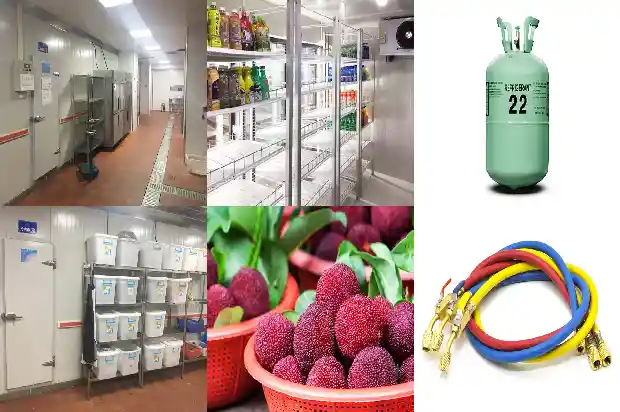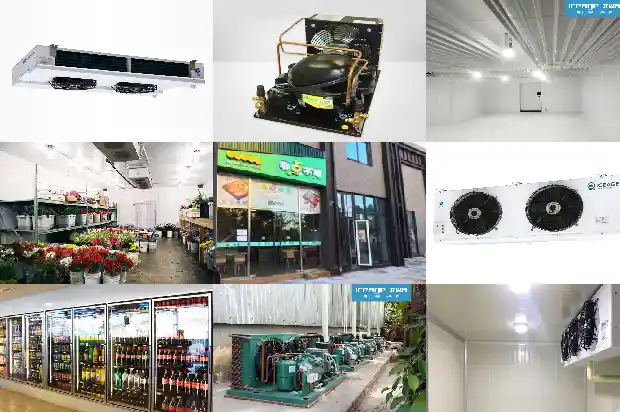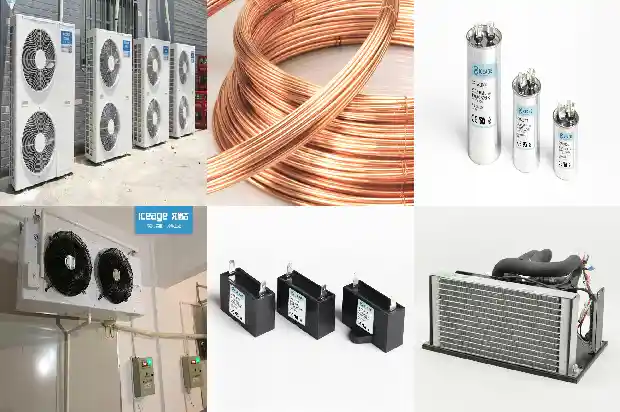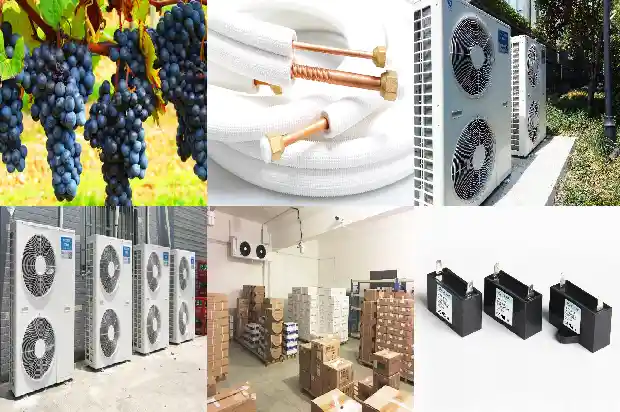Analysis of Common Faults of Chillers
2025-03-05
A chiller is an energy-saving machine that achieves a refrigeration effect through a vapor compression or absorption cycle. The full name of a chiller is a cooling water circulation machine, also known as a refrigerator, etc.
I. Classification of Chillers:
First of all, we need to distinguish the types of chillers: Generally, chillers are divided into two types: water-cooled and air-cooled.
An air-cooled chiller contains a water tank and a water pump and does not require a cooling tower for heat dissipation.
A water-cooled chiller is divided into an open chiller, a sealed chiller (some are called box-type chillers), and a screw chiller.
II. Equipment of Chillers:

I. Classification of Chillers:
First of all, we need to distinguish the types of chillers: Generally, chillers are divided into two types: water-cooled and air-cooled.
An air-cooled chiller contains a water tank and a water pump and does not require a cooling tower for heat dissipation.

A water-cooled chiller is divided into an open chiller, a sealed chiller (some are called box-type chillers), and a screw chiller.

II. Equipment of Chillers:
- Compressor;
- Water pump;
- Computer PC board, touch control, safe and convenient;
- Thermostat: Liquid crystal display thermostat electronic board;
- Expansion valve, filter;
- One 304 stainless steel water tank with internal and external thermal insulation materials;
- Electrical appliances;
- Safety protection system:
Compressor delayed start protection;
Ice water pump overload and indicator light;
Compressor overload protection;
Motor reverse rotation protection;
Compressor overload protection and indicator light;
Refrigerant shortage protection and indicator light;
Refrigerant high-pressure safety valve;
Poor heat dissipation protection and indicator light fault alarm;
Alarm buzzer;
...
III. Common Faults of Chiller Units: - The cooling water temperature is on the high side, and the condensation effect is poor:
The rated working condition of the cooling water required by the chiller unit is between 30~35°C. If the water temperature is high and the heat dissipation is poor, it will inevitably lead to a high condensation pressure. This phenomenon often occurs in the high-temperature season. The reasons for the high water temperature may be: faults in the cooling tower, such as the fan not running or even running in reverse, and the water distributor not rotating. It is manifested as a very high cooling water temperature that rises rapidly; the outside air temperature is high, the water circuit is short, and the amount of recyclable water is small. In this case, the cooling water temperature generally remains at a relatively high level, and the solution is to increase the water storage tank. - The cooling water flow is insufficient, and the rated water flow cannot be reached:
The main manifestation is that the pressure difference between the inlet and outlet water of the unit becomes smaller (compared with the pressure difference at the beginning of the system's operation), and the temperature difference becomes larger. The reasons for the insufficient water flow are water shortage in the system or the presence of air. The solution is to install an exhaust valve at the high point of the pipeline for exhaust; the pipeline filter is blocked or the filter is too fine, and its water permeability is limited. An appropriate filter should be selected and the filter screen should be cleaned regularly; the selected water pump is too small and does not match the system. - The condenser is scaled or blocked:
Tap water is generally used for the condensed water, and it is very easy to scale when the temperature is above 30°C. Since the cooling tower is open and directly exposed to the air, dust and foreign objects can easily enter the cooling water system, causing the condenser to be dirty and blocked, resulting in a small heat transfer area, low efficiency, and also affecting the water flow. It is manifested as an increase in the pressure difference and temperature difference between the inlet and outlet water of the unit. When touching the upper and lower parts of the condenser with your hand, the temperatures are very high, and the liquid outlet copper pipe of the condenser is hot to the touch. The unit should be backwashed regularly, and chemical cleaning for descaling is necessary when required. - Excessive refrigerant charging:
This situation generally occurs after maintenance, manifested as high suction and discharge pressures, high balance pressure, and high operating current of the compressor. Under the rated working condition, gas should be released according to the suction and discharge pressures, balance pressure, and operating current until it returns to normal. - The refrigerant is mixed with non-condensable gases such as air and nitrogen:
This situation generally occurs after maintenance when the vacuuming is not thorough. Only by discharging the refrigerant, vacuuming again, and charging the refrigerant again can it be solved.
- False alarms caused by electrical faults:
False alarms are caused by the moisture, poor contact, or damage of the high-pressure protection relay, the moisture or damage of the unit electronic board, and communication failures. For this kind of false fault, often the high-pressure fault indicator light on the electronic board is not on or is slightly on, manual reset of the high-pressure protection relay is ineffective, the measured operating current of the compressor is normal, and the suction and discharge pressures are also normal. - The evaporation pressure is too low:
The evaporation pressure of the water-cooled chiller may be too low due to insufficient refrigerant. Common reasons: insufficient cooling water volume; low cooling load; throttle orifice plate failure (only making the evaporation pressure low); the heat transfer tubes of the evaporator are contaminated by scale and other substances, resulting in deteriorated heat transfer (only making the evaporation pressure too low); insufficient refrigerant amount (only making the evaporation pressure too low). - The oil pressure difference is too low:
If the oil pressure of the compressor is too low, the compressor will stop running. Common reasons include: the oil filter is blocked; too much refrigerant is mixed into the lubricating oil. - The oil temperature is too high:
If the oil temperature of the refrigeration compressor is too high for a long time during operation, it will reduce the quality of the refrigeration oil and even carbonize the refrigeration oil. Common reasons: the cooling capacity of the oil cooler decreases; due to the blockage of the filter screen of the refrigerant filter, the supply of the refrigerant for cooling the oil cooler is insufficient. - The main motor is overloaded:
Unbalanced phase voltage of the power supply; large voltage drop of the power supply line;
Related Articles
- Analysis by Experts: Why Does the Four-way Reversing Valve Fail?
- Analysis of the Main Functions and Components of Refrigeration Air Conditioners
- Brief Analysis of Commonly Used Automatic Control Devices in the Refrigeration System
- Analysis of Common Auxiliary Components in the Refrigeration System One by One
- A Detailed Analysis of the Nine Reasons for the Low Pressure in the Refrigeration System!
- Analysis of the Working Process and Principle of Hot Fluoride Defrosting for Air Coolers
- Advantages and Disadvantages of Air-cooled Multi-connected Units and Analysis of Their Components
- Cause Analysis of High Discharge Temperature and Overload Protection of Modular Units
- Analysis of the Causes and Hazards of Corrosion in the Circulating Water System
- Analysis of Common Auxiliary Components in the Refrigeration System
- Analysis of the Composition, Control and Operation Process of Cold Storage System
- Analysis of Causes for Compressor Liquid Hammer, Overheating and Pre - heating
- Analysis of Seven Reasons for Ice Formation in Computer Room Air Conditioners
- Analysis and Troubleshooting of Common Faults in Air - source Heat Pumps
- Analysis of 6 Components in Air - cooled Multi - split Systems
- Analysis of Advantages, Disadvantages and 34 Common Components of Multi - split Air Conditioners
- Common Causes and Analysis of High and Low Pressure Alarms
- Common Causes and Analysis of Compressor Thermal Protection
